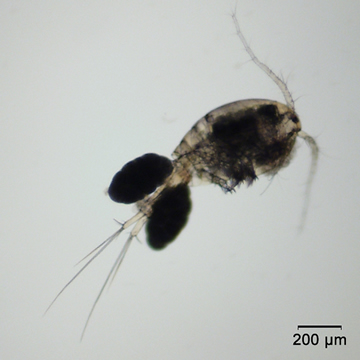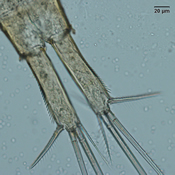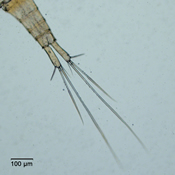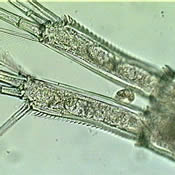(1) PARKER, R.A. 1961. Competition Between Eucyclops agilis and Daphnia pulex . Limnol. Oceanogr.. 6: 299-301.
(2) DODSON, S.L. 1975. Predation Rates of Zooplankton in Arctic Ponds. Limnology and Oceanography. 20: 426-433.
(3) HALL, D.J., AND G.G. WATERMAN,. 1967. Plankton of the Finger Lakes. Limnology and Oceanography. 12: 542-544.
(4) FRYER, G. 1957. The Food of Some Freshwater Cyclopoid Copepods and its Ecological Significance. The Journal of Animal Ecology. 26: 263-286.
(5) TINSON, S., AND J. LAYBOURN-PARRY. 1985. The behavioural responses and tolerance of freshwater benthic cyclopoid copepods to hypoxia and anoxia. Hydrobiologia. 127: 257-263.
(6) COLE, G.A. 1955. An ecological study of the microbenthic fauna of two Minnesota lakes. American Midland Naturalist. 53: 213-230.
(7) HANN, B.J., AND L. ZRUM. 1997. Littoral microcrustaceans (Cladocera, Copepoda) in a prairie coastal wetland: seasonal abundance and community structure. Hydrobiologia. 357: 37 - 52
(8)CÁCERES, C.E.,AND D.A. SOLUK. 2002. Blowing in the wind: a field test of overland dispersal and colonization by aquatic invertebrates. Oecologia. 131: 402 - 408.
(9) HANAZATO, T., AND S.I. DODSON. 1995. Morphological defenses of Daphnia against copepod predation on eggs. Archiv fur Hydrobiologie. 133: 49-59.
(10) HUDSON , P. L., L.T. LESKO, J.W. REID, AND M.A. CHRISCINSKE. 2003. Cyclopoid copepods of the Laurentian Great Lakes. Ann Arbor , MI : Great Lakes Science Center Home Page.
http://www.glsc.usgs.gov/greatlakescopepods/Key.php?GROUP=Cyclopoid
(11) ALEKSEEV, V., H.J. DUMONT, J. PENSAERT, D. BARIBWEGURE, AND J.R. VANFLETEREN. 2006. A redescription of Eucyclops serrulatus (Fischer, 1851) (Crustacea: Copepoda: Cyclopoida) and some related taxa, with a phylogeny of the E. serrulatus-group. Zoologica Scripta 35: 123-147.






